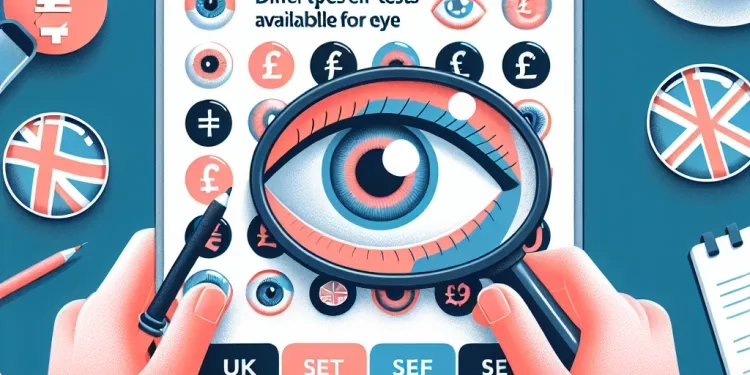
Find Help
More Items From Ergsy search
-
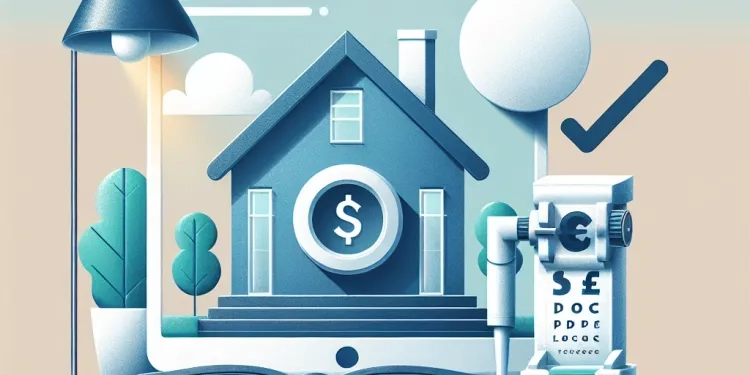
What is self-testing for eye patients?
Relevance: 100%
-

What types of self-tests are available for eye patients?
Relevance: 88%
-

What are the limitations of self-testing for eyes?
Relevance: 77%
-

How often should I self-test my eyes?
Relevance: 74%
-

Are self-tests a substitute for professional eye exams?
Relevance: 74%
-
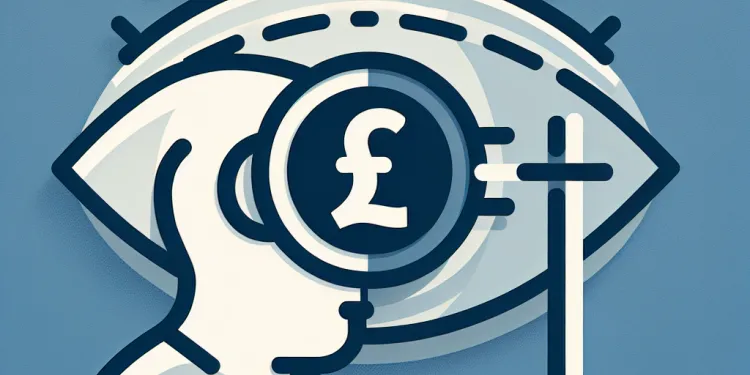
How does self testing for eye patients work?
Relevance: 73%
-

Can self-testing detect all eye conditions?
Relevance: 72%
-

Should I share the results of my self-tests with my eye doctor?
Relevance: 72%
-

Why would someone need to self-test their eyes?
Relevance: 71%
-

Do I need any special equipment for eye self-testing?
Relevance: 71%
-

Are there any self-tests for eye pressure?
Relevance: 63%
-

Can I use a smartphone for self-testing my eyes?
Relevance: 62%
-
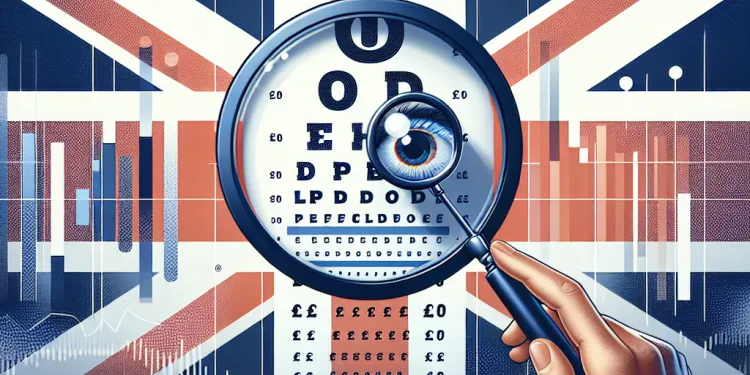
How do I use a vision chart for self-testing?
Relevance: 52%
-

Where can I find reliable self-testing tools for my eyes?
Relevance: 48%
-

Is it possible for self-tests to cause harm?
Relevance: 46%
-

Do insurance plans cover the cost of self-testing tools?
Relevance: 42%
-

What age groups can benefit from self-testing?
Relevance: 41%
-

What should I do if I notice changes during self-testing?
Relevance: 40%
-
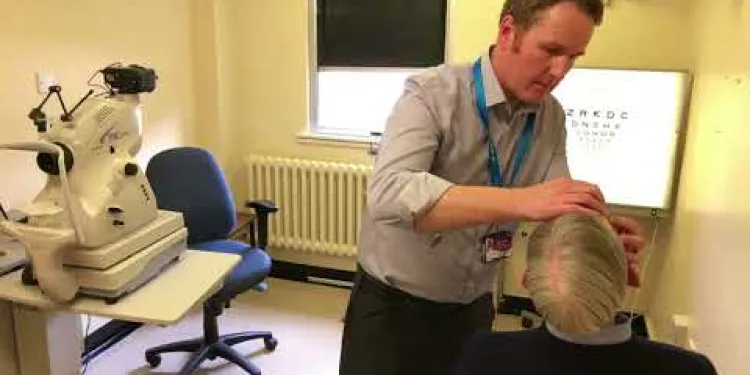
Derbyshire Diabetic Eye Screening - Diabetic Eye Screening
Relevance: 38%
-

Eye Injections at Royal Bournemouth Hospital
Relevance: 36%
-
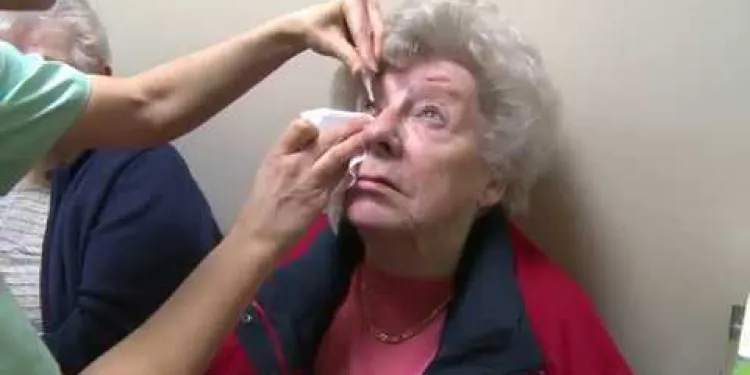
Eye Injections at Royal Bournemouth Hospital
Relevance: 36%
-
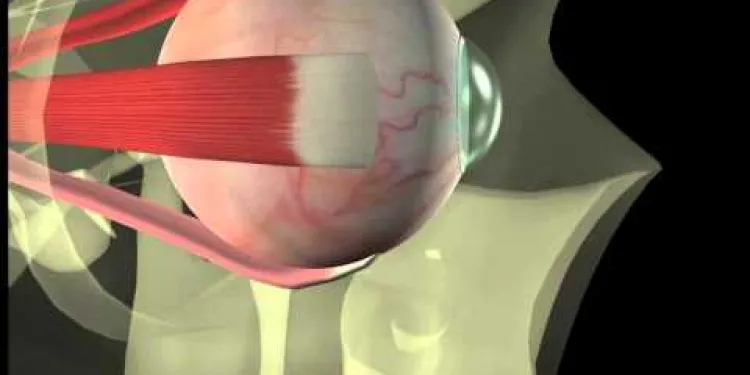
Thyroid eye disease. Squint surgery - The operation
Relevance: 34%
-

Diabetes Eye Screening
Relevance: 34%
-
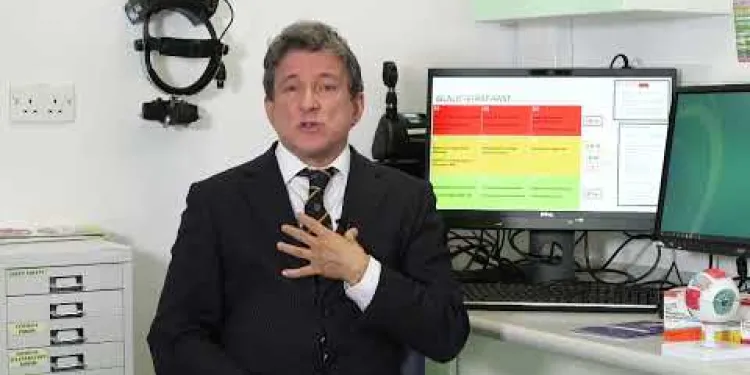
Glaucoma: general side effects of eye drops
Relevance: 33%
-

Can self-testing help me track my prescription changes?
Relevance: 32%
-
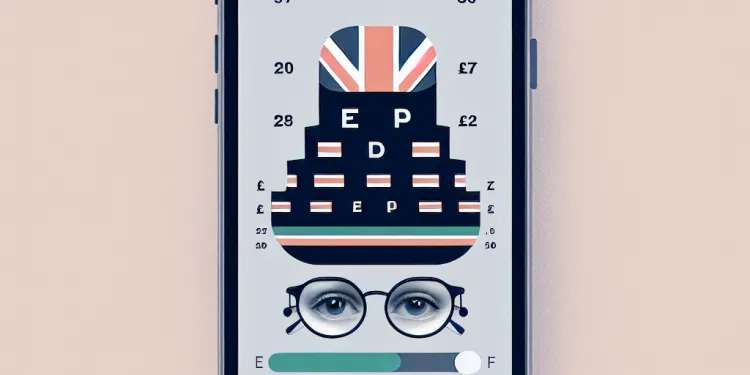
How accurate are app-based eye tests?
Relevance: 31%
-

North Yorkshire Diabetic Eye Screening Programme - A day in the life
Relevance: 31%
-
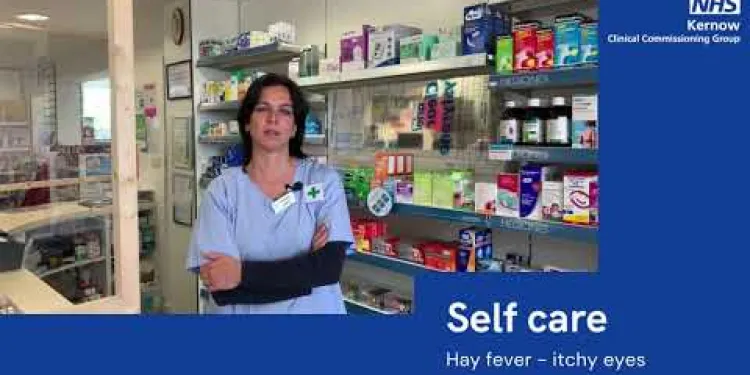
Self care - hay fever itchy eyes
Relevance: 30%
-

Cornea transplant patient Information
Relevance: 30%
-
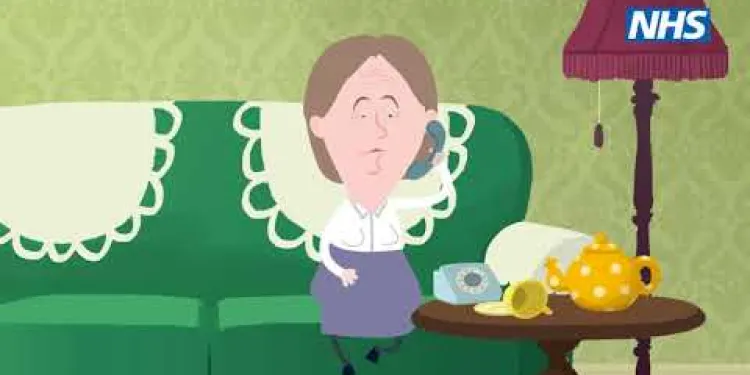
West Midlands LEHN Animated Video on Eye Health
Relevance: 29%
-
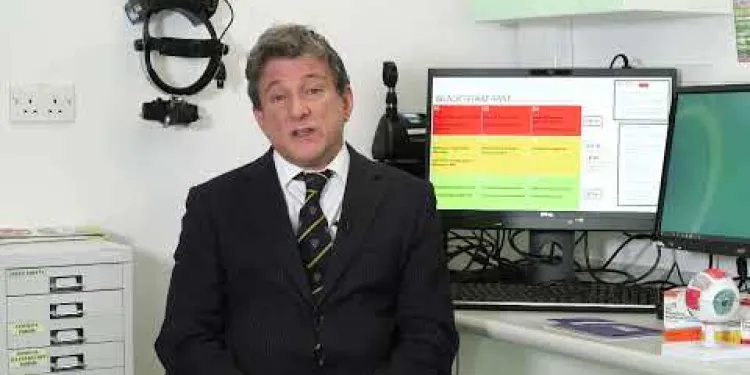
Glaucoma: how often should i take my eye drops?
Relevance: 29%
-
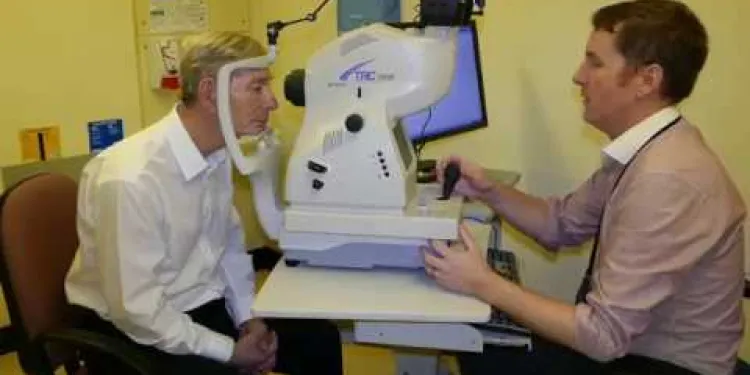
Derbyshire Diabetic Eye Screening - Your Screening Appointment
Relevance: 29%
-
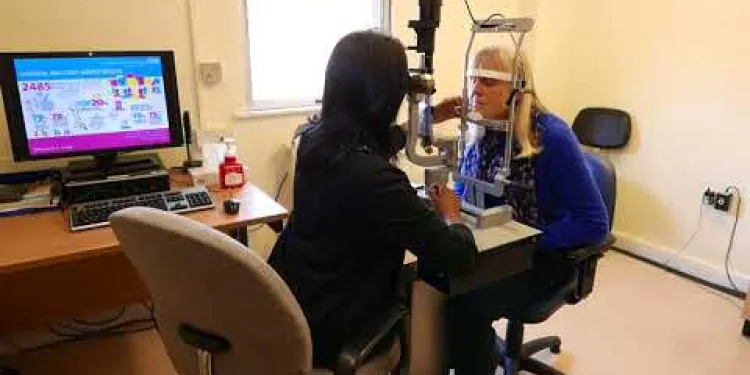
Derbyshire Diabetic Eye Screening - Assessment Clinic Appointment
Relevance: 29%
-
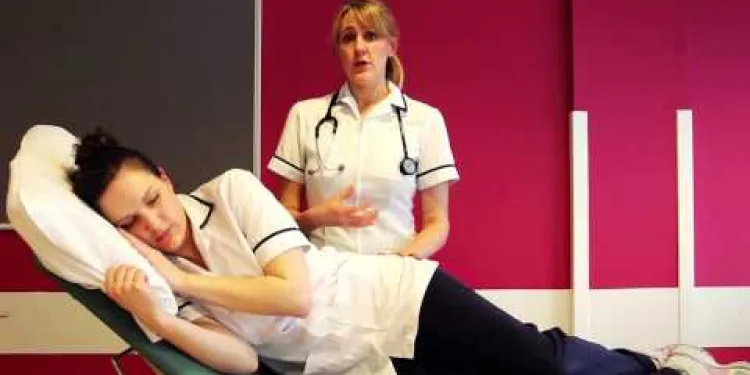
Positioning for Breathless Patient
Relevance: 26%
-
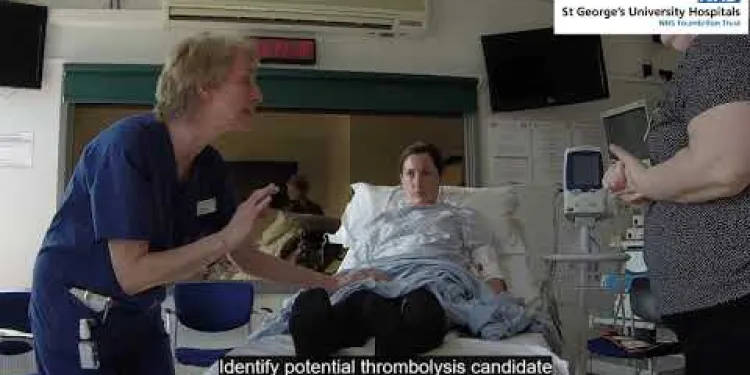
Assessing the stroke patient
Relevance: 26%
-
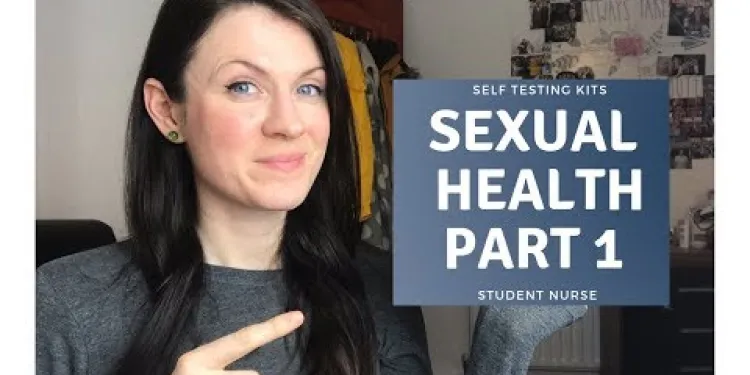
Let's Talk Sexual Health - Home Self Testing Kits
Relevance: 25%
-
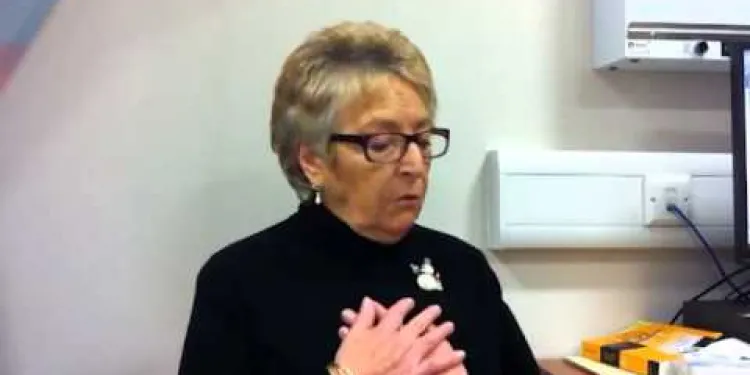
Neuroendocrine tumour patient video
Relevance: 24%
-
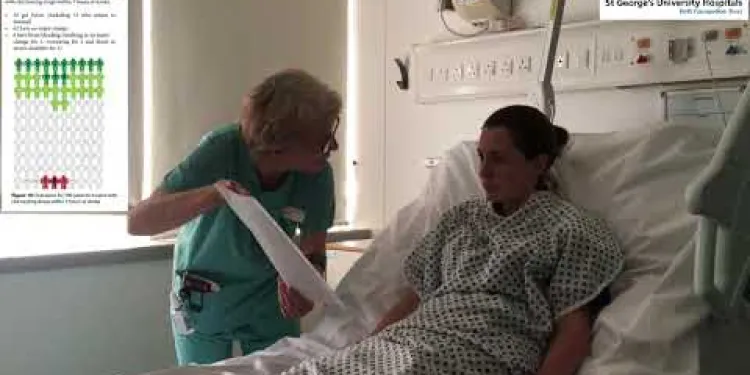
Gaining consent from stroke patients
Relevance: 24%
-

Exercise in patients with a neuropathy
Relevance: 23%
-
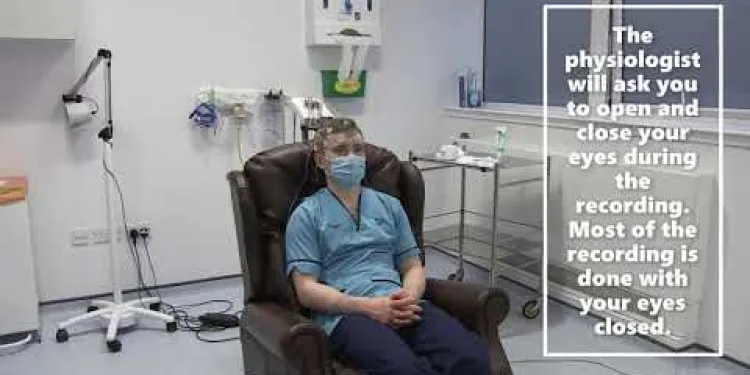
Neurophysiology EEG Patient Information
Relevance: 23%
Introduction to Eye Self-Tests
Eye self-tests are vital tools for individuals to monitor their eye health and detect early signs of vision problems. In the UK, a variety of self-tests are available for eye patients, enabling them to assess different aspects of their vision. While these tests are not substitutes for professional eye examinations, they can provide useful insights into the condition of one's eyesight.
Types of Eye Self-Tests
Visual Acuity Tests
Visual acuity tests are designed to measure how clearly a person can see. The most common self-test for visual acuity is reading a Snellen chart, which features letters of varying sizes. These tests can be easily downloaded and printed at home. Patients are advised to cover one eye and read the smallest line of letters they can see clearly from a specified distance.
Amsler Grid Test
The Amsler grid test is used to evaluate the central visual field and identify signs of macular degeneration. This test consists of a grid of horizontal and vertical lines with a dot in the center. Patients should focus on the central dot and observe whether any lines appear wavy or missing. Such distortions can indicate potential issues with the retina.
Contrast Sensitivity Tests
Contrast sensitivity tests assess the ability to distinguish between different shades and contrast levels. These tests can be conducted online or using printed materials. By identifying difficulties in distinguishing contrasts, individuals may uncover issues not detected during standard visual acuity tests. Poor contrast sensitivity can be indicative of cataracts or other vision problems.
Colour Vision Tests
Colour vision tests help identify colour blindness or other colour perception issues. The Ishihara Test is the most widely recognized colour vision test and involves identifying numbers or patterns within a series of dots in varying colours. These tests are typically available online, offering a simple method to assess colour vision at home.
Near Vision Tests
Near vision tests help evaluate the ability to see clearly at close distances. These are particularly useful for detecting presbyopia, a condition that becomes more prevalent with age. Printed reading cards featuring text of various sizes enable individuals to assess their near vision by reading from a standard reading distance.
Conclusion
Self-tests for eye health provide a convenient method for UK residents to monitor their vision and identify potential issues that require further professional assessment. While these tests can be insightful, regular eye check-ups with an optometrist or ophthalmologist remain essential for maintaining overall eye health.
Introduction to Eye Self-Tests
Eye self-tests help you keep track of your eye health. They can show if there are early signs of vision problems. In the UK, there are different self-tests you can do to check your eyesight at home. These tests are not the same as seeing an eye doctor, but they can give you an idea of how your eyes are doing.
Types of Eye Self-Tests
Visual Acuity Tests
Visual acuity tests check how well you see. The most common test is reading a Snellen chart, which has letters of different sizes. You can download and print this chart at home. Cover one eye and try to read the smallest line of letters you can see from a certain distance.
Amsler Grid Test
The Amsler grid test checks the center part of your vision. You look at a grid of lines with a dot in the middle. Focus on the dot and see if the lines look wavy or if some are missing. If they do, you might have a problem with your eyes.
Contrast Sensitivity Tests
Contrast sensitivity tests see how well you can tell different shades apart. You can do these tests online or use printed sheets. If it's hard to see contrast, it might mean you have vision problems like cataracts. This test checks things that regular tests might miss.
Colour Vision Tests
Colour vision tests show if you have trouble seeing colors right. The Ishihara Test is a famous one. It has numbers or patterns made of dots in different colors. You can do this test online to check your color vision from home.
Near Vision Tests
Near vision tests check how well you see things up close. They help find presbyopia, a common eye condition as people get older. Use reading cards with text in different sizes to test your near vision by reading from a normal distance.
Conclusion
Self-tests are helpful for people in the UK to watch over their eye health. They can show if you need to see an eye doctor. But remember, visiting an eye doctor regularly is important to keep your eyes healthy.
Frequently Asked Questions
What are self-tests for eye patients?
Self-tests for eye patients are tools or exercises that individuals can perform at home to help assess their vision or monitor eye health.
What is a visual acuity test?
A visual acuity test measures how well you can see from a distance and is often performed using an eye chart with letters or symbols.
Can I take a color vision test at home?
Yes, color vision tests, such as the Ishihara Color Test, are available online or in printable forms to help detect color blindness.
What is an Amsler grid test used for?
The Amsler grid test is used to detect macular degeneration and other vision problems. It involves looking at a grid pattern to see if any lines appear blurry or distorted.
How can I test my peripheral vision at home?
You can test peripheral vision at home by focusing on a central point and noticing objects or movement in the surrounding area without moving your eyes.
Is there a self-test for dry eyes?
Yes, there are questionnaires and symptom checklists available that can help assess whether you may have dry eye syndrome.
Can online tools help diagnose vision problems?
Online tools and apps can help screen for vision issues, but they are not a substitute for a professional eye exam by an optometrist or ophthalmologist.
Are there self-tests for detecting glaucoma?
There aren't reliable self-tests for glaucoma, but monitoring changes in vision or warning signs should prompt a professional check-up.
How can I check for astigmatism by myself?
You can use an online astigmatism test that involves looking at an image with lines to see if they appear equally dark or blurred.
What is a pinhole test?
The pinhole test involves looking through a small hole to see if it improves vision, which can indicate an issue with refractive errors.
Can self-tests detect cataracts?
Self-tests aren't effective for diagnosing cataracts, but noticing cloudiness or blurred vision may indicate a need for an eye examination.
Are self-tests suitable for children?
Some self-tests can be adapted for children, but professional eye exams are recommended for accurate assessments in young patients.
What is a confrontation visual field test?
A confrontation visual field test involves covering one eye and identifying objects in the periphery to assess side vision.
How does one conduct a cover test at home?
A cover test involves covering one eye and then the other to check for eye movement or deviation, which can indicate strabismus.
Are smartphone apps reliable for eye self-tests?
While smartphone apps can provide preliminary assessments, they are not as accurate as professional testing and should not replace eye exams.
How do I test for night vision problems?
Testing for night vision problems at home isn't straightforward; however, difficulty seeing in low light should prompt a professional evaluation.
Can I test for binocular vision issues myself?
You can perform simple tests like the pencil push-up test for binocular vision issues, but professional evaluation is recommended for accurate diagnosis.
What is a stereopsis test?
A stereopsis test checks depth perception using specific patterns or 3D images to determine how well your eyes coordinate together.
How can I check for floaters at home?
Noticing floaters usually requires looking at a bright, plain background; any sudden increase in floaters should be checked by a professional.
What should I do if a self-test indicates a vision problem?
If a self-test indicates a potential vision problem, it is important to schedule an appointment with an eye care professional for a comprehensive examination.
What are self-checks for people who need eye care?
Self-checks for eyes are simple tests you can do at home. They help you see how well your eyes are working. These checks are not as good as a doctor's test, but they can be helpful. It's important to see an eye doctor for a full eye check-up.
Here are some tips to help you:
- Find a quiet place with good light to do the test.
- Ask someone to help you if you need it.
- Use large print or pictures if that helps you see better.
- Use simple words and clear pictures.
- Take your time and do not rush.
Remember, if you have any questions or problems with your eyes, talk to an eye doctor.
Eye tests you can do at home are like little check-ups for your eyes. They help you see how well your eyes are working and keep track of your eye health.
What is a vision test?
A vision test checks how well you can see.
During the test, you look at letters or pictures on a chart.
It helps find out if you need glasses or if your eyes are healthy.
If reading is hard, use a ruler to follow words.
Ask someone to read with you to make it easier.
A visual acuity test helps check how well you can see things that are far away. This test usually uses a chart with letters or pictures.
Can I do a color vision test at home?
Yes, you can do a color vision test at home. You can use a computer, tablet, or phone. There are special apps and websites that help. Ask an adult if you need help finding them.
Yes, you can find color vision tests online or in print. These tests, like the Ishihara Color Test, help check if someone is color blind.
What is an Amsler grid test used for?
An Amsler grid test helps check your eyes. It shows if you have any problems seeing straight lines or if there are any blurry or wavy spots in your vision.
You look at a grid with straight lines and a dot in the middle. You say if you see any lines that look bent or missing.
This test is good for finding trouble with the eyes, like age-related macular degeneration (AMD).
If this is hard to understand, you can ask someone to help you or use a magnifying glass to see the grid better.
The Amsler grid test helps find eye problems like macular degeneration. You look at a grid of lines. If the lines look blurry or bent, it tells the doctor there might be a problem.
How can I check my side vision at home?
You can check your side vision, called peripheral vision, by doing a simple test at home.
Here is how:
- Ask a friend or family member to help you.
- Sit or stand in one spot. Look straight ahead.
- Keep your eyes looking forward. Do not move your eyes.
- Your helper stands behind you and slowly moves an object into your side view.
- Tell your helper when you first see the object from the side.
Use bright objects like a colorful ball or a toy.
If you have trouble seeing the object from the side, you should talk to an eye doctor. They can help you. You can also use tools like a mirror to help you practice noticing things from the side. Always make sure you are in a safe place with someone to guide and watch over you. Remember to take breaks and relax your eyes if they get tired.
You can check side vision at home by looking at one spot. Try to see things or movement around you without moving your eyes.
Can I check if my eyes are dry by myself?
Yes, there are question sheets and symptom lists that can help you find out if you might have dry eyes.
Can online tools help find vision problems?
Online tools can help check your eyes. They can show if you might have vision problems.
If you think you might have a problem with your eyes, these tools can be helpful. But, it is very important to also see a real eye doctor. They can check your eyes and help you the best way.
Here are some tips to remember:
- Ask an adult to help you use online tools.
- Look for tools made by doctors or trusted health groups.
- Always go to an eye doctor for a full check-up.
There are websites and apps that can help check if you have problems with your eyes. But, you still need to see an eye doctor to be sure everything is okay.
Can you test for glaucoma at home?
There are no good self-tests for glaucoma. But, if you notice changes in your vision or see any warning signs, you should go to the eye doctor for a check-up.
How can I check for astigmatism by myself?
Astigmatism is when your eye is not perfectly round. It can make things look blurry. Here is how you can check at home:
- Look at a clock: Stand far away and see if the numbers look clear. If they are blurry, you might have astigmatism.
- Use an astigmatism chart: This is a special picture with lines. You can find it online. Cover one eye and look at the chart. Then cover the other eye. If the lines look different, you might have astigmatism.
- Ask for help: Someone can help you with these checks, like a family member or friend.
If you think you have astigmatism, visit an eye doctor. They can help you for sure.
Tips:
- Use bright light when you check your eyes.
- Ask someone to help if you are confused.
Remember, it is always best to see an eye doctor to be sure about your eyes.
You can try an online test for astigmatism. In the test, you look at a picture with lines. Check if the lines look the same or if some look blurry.
What is a pinhole test?
A pinhole test is a way to check your eyes.
You look through a small hole, like in a piece of paper.
This helps find out if you see clearly or need glasses.
You can ask an eye doctor to help with this test.
The pinhole test helps check your eyes. You look through a small hole. If your vision gets better, it might mean your eyes have trouble focusing.
Can You Find Out If You Have Cataracts by Yourself?
You might wonder if you can check for cataracts on your own. Cataracts happen when the eye lens gets cloudy and makes it hard to see. You should see an eye doctor to be sure, but there are simple things you can do to help.
Here are some steps and tools:
- Ask someone to look at your eyes in bright light. They might see a cloudy spot.
- Notice if bright lights or headlights make it harder to see.
- See if colors look faded or not as bright as before.
- You can try special apps or magnifying tools to help check your eyes.
Remember, it’s always best to visit an eye doctor to know for sure.
Self-tests do not work for finding cataracts. But, if you see things blurry or cloudy, you should get your eyes checked by a doctor.
Can children use self-tests?
Self-tests are like kits you can use at home to check if you might be sick.
It depends on the child's age and needs:
- Some tests are safe for children. Others may need an adult's help.
- Always read the instructions. They tell if a test is okay for kids.
Here are some ways to help:
- Ask an adult to help with the test.
- Use a timer to count how long to wait for results.
- A doctor or nurse can also help if you’re not sure.
There are some eye tests you can do at home for children. But it is best to go to an eye doctor to make sure their eyes are healthy.
What is a confrontation visual field test?
A confrontation visual field test checks how well you can see.
The test helps find out what you can see on the sides without moving your eyes. It's like checking your side vision.
A doctor or nurse will sit in front of you. They will ask you to cover one eye. Then they will move their fingers in different directions.
You will tell them when you see their fingers. This shows them how well you can see around you.
If you find it hard to understand the test, you can ask the doctor or nurse to explain it again.
Using pictures might help make it clearer.
A confrontation test checks how well you can see to the sides. You cover one eye and have to spot things at the edges of your sight.
How can you do a cover test at home?
A cover test helps check your eyes. It is simple to do. Here is a way to try it at home.
What you need:
- A friend or family member to help you.
- An object to focus on, like a toy or picture.
Steps to follow:
- Stand or sit about 10 feet away from the object.
- Look straight at the object.
- Your helper will cover one of your eyes with their hand.
- They will watch your other eye. Does it move?
- Switch the cover to your other eye and repeat.
What to look for:
If your eyes move when the cover switches, talk to an eye doctor. It is important to check your eyes.
Tips:
- Be calm and take your time.
- Ask for help if you need it.
- Use a tool like a timer to keep track of time.
A cover test is a simple eye test. First, you cover one eye and then the other. This helps the doctor see if your eyes move differently or don't line up right. This can show if you have a condition called strabismus, where your eyes don't look in the same direction.
Can you trust phone apps for eye tests?
Phone apps can help check your eyes a little bit, but they are not as good as going to the eye doctor. You should still get your eyes checked by a real eye doctor.
How can I check if I have trouble seeing at night?
It can be hard to test if you have trouble seeing at night by yourself at home. But if you find it hard to see in the dark, you should see a doctor to check your eyes.
Can I check my own eyes to see if they work together?
Yes, you can do some simple tests to check if both your eyes work well together. Here are a few ways to help you:
- Pencil Test: Hold a pencil at arm's length and slowly bring it closer to your nose. Try to keep the pencil in focus with both eyes.
- Eye Cover Test: Cover one eye and look at an object, then cover the other eye. See if the object moves when you switch eyes.
- Helpful Apps: You can use apps on your phone that have eye exercises.
Talking to an eye doctor is a good idea if you're worried about your eyes. They can help you find out if there are any problems.
You can try a simple eye test at home using a pencil. This is called the pencil push-up test. It helps see if both eyes work together. But it is also important to visit an eye doctor for a proper check-up. They can tell you exactly what's needed.
What is a stereopsis test?
A stereopsis test checks how well your eyes work together. It helps to see if both eyes see 3D things properly.
Tools to help:
- Use pictures to explain.
- Ask someone to read with you.
A stereopsis test checks how well you see in 3D. It uses special pictures or patterns to see how your eyes work together.
How can I check for floaters at home?
Floaters are little shapes or spots you might see moving around in your eyes. Here is how you can check for them:
- Find a bright spot: Look at a bright, blank wall or the blue sky. This can help you see floaters better.
- Pay attention: Close one eye and then the other to check each eye separately.
- Use a journal: Drawing or writing about the floaters can help you keep track of any changes.
- Ask for help: Tell a parent or an adult you trust if you notice any changes or if something worries you.
If you have trouble reading, you can try using a ruler or your finger to follow along the lines. You can also ask someone to read the words with you.
To see floaters, look at a bright and plain background. If you see a lot more floaters all of a sudden, you should see a doctor.
What should I do if a self-test shows I might have trouble seeing?
If your test shows you might have trouble seeing, you should go to an eye doctor. They can check your eyes to find out what's going on.
Useful Links
- Ergsy carfully checks the information in the videos we provide here.
- Videos shown by Youtube after a video has completed, have NOT been reviewed by ERGSY.
- To view, click the arrow in centre of video.
- Most of the videos you find here will have subtitles and/or closed captions available.
- You may need to turn these on, and choose your preferred language.
- Go to the video you'd like to watch.
- If closed captions (CC) are available, settings will be visible on the bottom right of the video player.
- To turn on Captions, click settings .
- To turn off Captions, click settings again.
More Items From Ergsy search
-

What is self-testing for eye patients?
Relevance: 100%
-

What types of self-tests are available for eye patients?
Relevance: 88%
-

What are the limitations of self-testing for eyes?
Relevance: 77%
-

How often should I self-test my eyes?
Relevance: 74%
-

Are self-tests a substitute for professional eye exams?
Relevance: 74%
-

How does self testing for eye patients work?
Relevance: 73%
-

Can self-testing detect all eye conditions?
Relevance: 72%
-

Should I share the results of my self-tests with my eye doctor?
Relevance: 72%
-

Why would someone need to self-test their eyes?
Relevance: 71%
-

Do I need any special equipment for eye self-testing?
Relevance: 71%
-

Are there any self-tests for eye pressure?
Relevance: 63%
-

Can I use a smartphone for self-testing my eyes?
Relevance: 62%
-

How do I use a vision chart for self-testing?
Relevance: 52%
-

Where can I find reliable self-testing tools for my eyes?
Relevance: 48%
-

Is it possible for self-tests to cause harm?
Relevance: 46%
-

Do insurance plans cover the cost of self-testing tools?
Relevance: 42%
-

What age groups can benefit from self-testing?
Relevance: 41%
-

What should I do if I notice changes during self-testing?
Relevance: 40%
-

Derbyshire Diabetic Eye Screening - Diabetic Eye Screening
Relevance: 38%
-

Eye Injections at Royal Bournemouth Hospital
Relevance: 36%
-

Eye Injections at Royal Bournemouth Hospital
Relevance: 36%
-

Thyroid eye disease. Squint surgery - The operation
Relevance: 34%
-

Diabetes Eye Screening
Relevance: 34%
-

Glaucoma: general side effects of eye drops
Relevance: 33%
-

Can self-testing help me track my prescription changes?
Relevance: 32%
-

How accurate are app-based eye tests?
Relevance: 31%
-

North Yorkshire Diabetic Eye Screening Programme - A day in the life
Relevance: 31%
-

Self care - hay fever itchy eyes
Relevance: 30%
-

Cornea transplant patient Information
Relevance: 30%
-

West Midlands LEHN Animated Video on Eye Health
Relevance: 29%
-

Glaucoma: how often should i take my eye drops?
Relevance: 29%
-

Derbyshire Diabetic Eye Screening - Your Screening Appointment
Relevance: 29%
-

Derbyshire Diabetic Eye Screening - Assessment Clinic Appointment
Relevance: 29%
-

Positioning for Breathless Patient
Relevance: 26%
-

Assessing the stroke patient
Relevance: 26%
-

Let's Talk Sexual Health - Home Self Testing Kits
Relevance: 25%
-

Neuroendocrine tumour patient video
Relevance: 24%
-

Gaining consent from stroke patients
Relevance: 24%
-

Exercise in patients with a neuropathy
Relevance: 23%
-

Neurophysiology EEG Patient Information
Relevance: 23%


